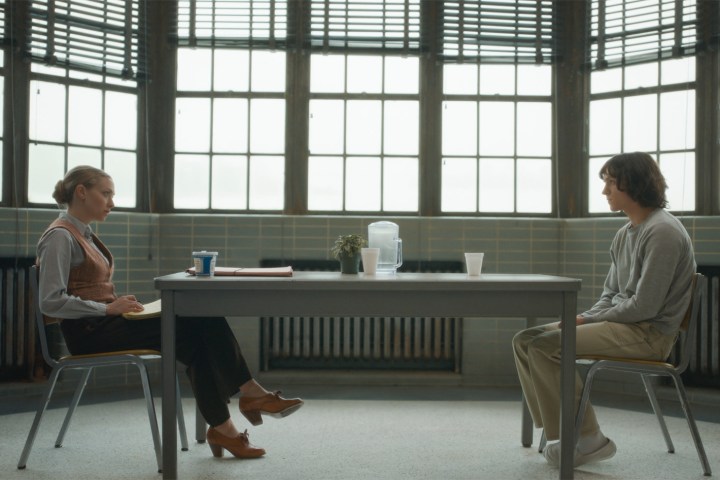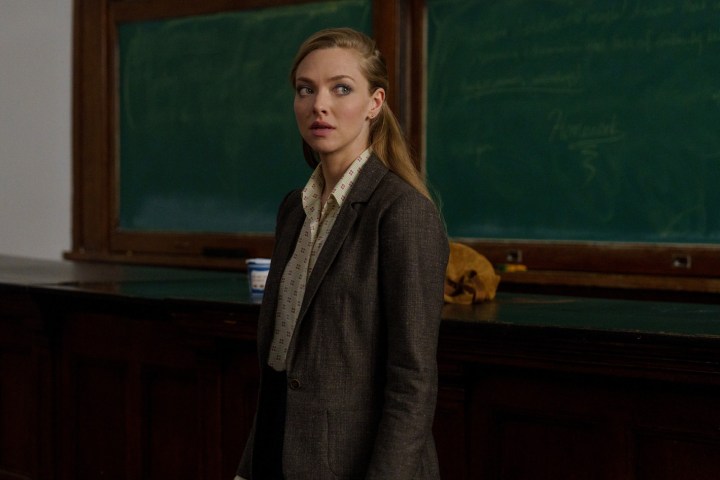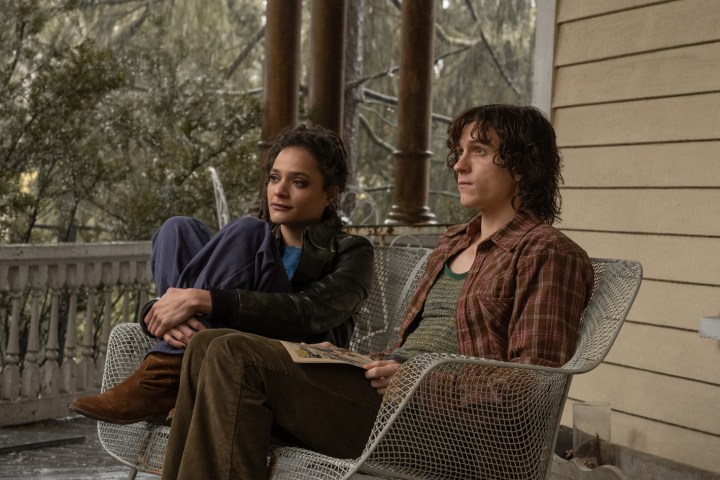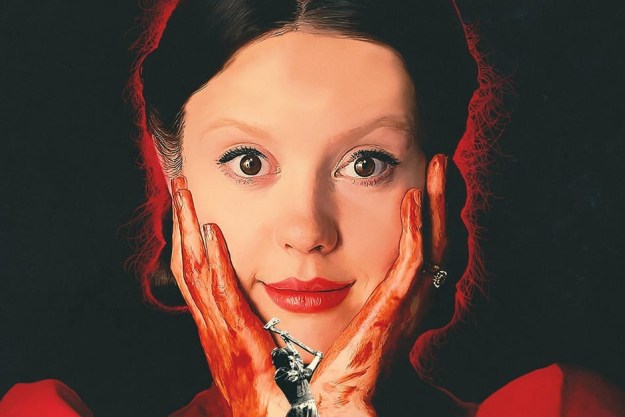
“The Crowded Room is a psychological thriller that doesn't have much to offer when it comes to thrills or surprises.”
- Tom Holland and Amanda Seyfried's engaging lead performances
- Christopher Abbott's scene-stealing, late-season supporting turn
- An infectious sense of empathy throughout
- Too many filler episodes
- Several painfully obvious twists
- Multiple thinly drawn supporting characters
Throughout the first half of its 10-episode season, The Crowded Room does not have a story. It has a twist, which it drags out for nearly six hours. In doing so, the new Apple TV+ series leaves its two immensely capable leads, Amanda Seyfried and Tom Holland, stranded with nothing to do but be vessels for The Crowded Room’s endless exposition dumps. When it’s later revealed that not everything is as it seemed in the show’s first half, it’s hard not to realize in the same breath just how much more interesting The Crowded Room could have been if it had simpy played it straight from the very beginning.
Unfortunately, these kinds of miscalculations are present in all of The Crowded Room’s 10 episodes. Even when the series has reached some of its most moving and compelling moments — most of which occur in its final few installments — it dampens their impact with “twists” that not only come across as frustratingly hokey, but also seem to exist solely to justify The Crowded Room’s overlong 10-hour runtime. There’s an intriguing, well-acted series in The Crowded Room. The problem is that it’s buried under 6 hours’ worth of unnecessary filler.

Loosely inspired by Daniel Keyes’ 1981 nonfiction novel The Minds of Billy Milligan, The Crowded Room picks up with its lead, Danny Sullivan (Holland), after he is arrested for participating in a public shooting that leaves three people injured. Following his arrest, Danny catches the attention of interrogator Rya Goodwin (Seyfried), who conducts a series of one-on-one interviews with him in the hopes of unearthing the truth behind the crime. The Crowded Room uses these interviews as a way into its numerous flashbacks, which gradually reveal exactly how Danny went from being a relatively sweet kid born and raised in upstate New York to a hostile shooter.
Along the way, The Crowded Room, which comes from A Beautiful Mind writer Avika Goldsman, introduces viewers to a handful of key figures in Danny’s life, including his stepfather Marlin, (Will Chase); his mother, Candy (Emmy Rossum); a free-spirited partier named Ariana (Sasha Lane), and his Israeli landlord, Yitzak (Lior Raz). In its early episodes, The Crowded Room primarily focuses on the time Danny spent living with the latter two characters. To say anything more here about their roles, though, would be to spoil many of the surprises that The Crowded Room spends a considerable amount of time trying to hold on to.
The problem is that many of The Crowded Room’s twists are painfully obvious from the moment the show begins. Even those who have no knowledge of the 1981 novel that served as the series’ inspiration will likely find themselves catching on quickly to the revelation that The Crowded Room essentially grounds the first and second halves of its season around. That, in turn, makes the show’s needlessly long runtime feel alternately confounding and irritating.

Once it’s done away with its initial façade, The Crowded Room picks up quite a bit in its second half, which adopts an increased focus on actors like Seyfried and Christopher Abbott, who shows up late in the series as Danny’s lawyer and makes one of the biggest impressions of any of its cast members. Seyfried, for her part, is given so little to do in The Crowded Room’s first five episodes that it is, at first, hard to understand why she agreed to star in the series, especially coming off her career-best turn in last year’s The Dropout.
When Rya is actually allowed to start driving the series’ narrative forward, it becomes easier to see why Seyfried was drawn to the role. Her work in the series’ final third, particularly her scenes with Abbott, Holland, and Rossum, just further cements Seyfried’s place as one of the most underrated and capable screen actresses working right now. Overall, The Crowded Room is often at its best when it is at its most empathetic, which is why Seyfried’s Rya, whose interest in Holland’s Danny extends far beyond her own professional curiosity, is so key to many of its best moments.
As for Holland himself, quite a lot of noise has been made about the effect his role here had on him. It’s clear from the moment The Crowded Room begins that the Spider-Man star fully threw himself into the splintered headspace of his character, however, The Crowded Room spends so much time trying to dance around the emotional realities of Danny’s life that it ends up wasting Holland. It’s only in the series’ final three episodes that the actor is finally able to portray all the aspects of Danny that likely made him an appealing character in the first place. Once he’s allowed to do so, it’s made blindingly clear just how much better The Crowded Room could have been if it had just been written as a four- or six-episode limited series.

Cutting down its number of episodes would have allowed The Crowded Room to excise some of its most trying installments, which include an episode-long excursion to London that might as well have been titled Filler. The show could have similarly lost a handful of late-season twists that are clearly meant to heighten its stakes and tension, but mostly come across as cheesy and hackneyed. While Rossum, Jason Isaacs, and Emma Laird do their best to breathe real life into some of The Crowded Room’s supporting figures, their performances suffer due to the show’s indecisive characterizations of their roles.
The same can be said for The Crowded Room itself, which suffers from an unevenness that is present in nearly every aspect of it. The show is, in a bit of a tragically ironic twist of fate, brought down by its own conflicting impulses. On the one hand, it’s a series that desperately wants to imbue its characters’ journeys with as much empathy and heart as it can. On the other, it’s a wannabe genre experiment that feels the need to tell its story in the most overcomplicated manner possible. Ultimately, the most interesting thing about The Crowded Room is just how resolutely it refuses to get out of its own way.
The first three episodes of The Crowded Room are now streaming on Apple TV+. New episodes premiere weekly. Digital Trends was given early access to all 10 of the series’ episodes.
Editors' Recommendations
- The best Hulu original series right now
- Apple TV+ reveals 2023 holiday programs for kids and families
- Decision to Leave review: An achingly romantic noir thriller
- The Midnight Club review: an earnest YA horror adventure
- Tár review: Cate Blanchett soars in Todd Field’s ambitious new drama



